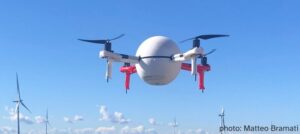VITAL: Vertical profiling of the troposphere: Innovation, opTimization and AppLication
The VITAL I and II Campaigns: the observational core of the fourth HErZ funding phase
In the previous HErZ phase, the main goal of FESSTVaL was to observe the horizontal structure of cold pools on the sub-mesoscale with an unprecedented spatial resolution within an area of ~20 km radius. In this HErZ phase we now focus on the vertical structure of the troposphere with the objective to contribute to filling the observational gap of wind, water vapor and temperature profile observations in the ABL. Filling this gap means obtaining improved information about the pre-convective environment, the diurnal ABL development, low-level jets, TKE profiles or the potential for fog formation or dissipation
To this extent, HIRES-APP develops and applies novel observation methods for vertical profiling and assesses their impact in ICON-D2 data assimilation. For this, the observational campaign VITAL I will
- collect a comprehensive set of state-of-the-art vertical profile observations
- apply newly developed retrieval algorithms for remote sensing
- deliver a proof of concept for UAS profiling and satellite / ground-based synergy and deliver feedback for the development of the DWD observing system
- provide training opportunities with state-of-the-art instrumentation for young researchers within HErZ
VITAL I will take place in August 2024 at the Jülich Observatory for Cloud Evolution (JOYCE) and profit from the available measurement infrastructure at the Research Center Jülich. We generate vertical profiling data sets from all currently available state-of-the-art observational approaches for tropospheric profiling at one site and share these with stakeholders.
In parallel, August 2024 represents a core phase of the 2024 WMO UAS Demonstration campaign. WMO has assessed the contribution of HIRES-APP to this campaign to be very relevant. Regular, daily coordinated multi-copter launches to profile wind, turbulence, temperature and water vapor in the lowest 2 km of the atmosphere will take place at JOYCE. Two small UAS of type MASC-MC (Multi-purpose Airborne Sensor Carrier of type Multi-Copter) with a novel, improved wind estimation are prepared and calibrated for the VITAL I. After each flight day quality checks will be performed and quicklooks containing the atmospheric variables will be created for each flight day and site. The data will be submitted to WMO in the required timing, resolution and quality.

Image courtesy of Environmental Physics Group, University of Tübingen
Simultaneously, intensive evaluation and intercomparison will be carried out with the new JOYCE Raman lidar (installation planned for 05/2024), a Differential Absorption Lidar (DIAL), regular radiosonde ascents as well as passive remote sensing from the surface (MWR, infrared spectrometer AERI) and space (IASI from EPS). The research objective of VITAL I is to evaluate to what extent the novel methods developed in the HIRES-APP work packages can be successfully applied and to explore the potential for an operational application. Associated to VITAL I is the HErZ 2024 Summer School on Moden Methods for Atmospheric Profiling.
While VITAL I has a more technical focus, VITAL II in the Summer of 2026 will focus on phenomena within the convective and stable boundary layer over the Rhineland ABC/J (Aachen-Bonn-Cologne / Julich) region. More information will follow here after VITAL I.
Image courtesy of Lukas Pftitzenmaier, University of Cologne
